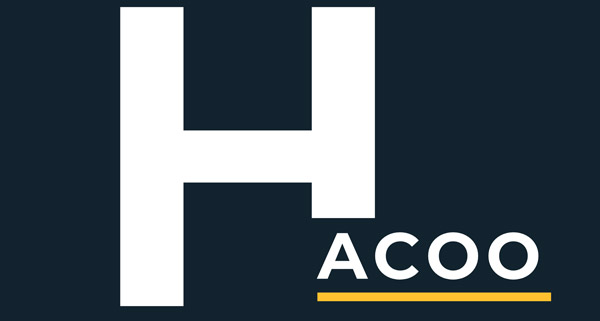In today’s always-on world, the concept of wellness is no longer a luxury—it’s a lifestyle. With a growing focus on proactive health management, health and wellness subscription services have emerged as a leading solution for individuals seeking sustainable self-care, better mental health, and improved physical performance. These subscription models are redefining the healthcare landscape through personalization, convenience, and accessibility—traits that the traditional system often lacks.
Why Health & Wellness Subscriptions Are Booming
According to a 2024 survey by Recurly, 71% of U.S. consumers used subscriptions to support their health and wellness goals, a figure that continues to rise. The demand is fueled by shifting attitudes toward self-care, digital healthcare tools, and the desire for cost-effective, customized support.
Key Growth Drivers:
- Holistic Wellness Trends: Users seek balance in physical, mental, emotional, and even financial health.
- Tech-Enabled Tools: Fitness trackers, smart apps, and remote monitoring devices streamline wellness routines.
- Generational Shifts: Gen Z and millennials prioritize mental health and are willing to spend over $100/month on wellness services.
Types of Health & Wellness Subscription Services
1. Fitness & Exercise Subscriptions
From traditional gym memberships to AI-powered workout apps, fitness subscriptions are evolving fast.
Popular Platforms:
- Peloton: Interactive fitness with live classes and performance tracking.
- Fitbod: AI-generated workouts based on your goals and progress.
- Aaptiv: Audio-guided workouts for on-the-go fitness.
2. Nutrition & Meal Kit Subscriptions
Customized meal kits simplify healthy eating while addressing dietary restrictions and goals.
| Brand | Focus Area | Price Range |
| HelloFresh | Balanced meals | $8–$12 per meal |
| Freshly | Ready-made, healthy | $9–$11 per meal |
| Thistle | Plant-based nutrition | $11–$14 per meal |
These services often include calorie counts, portion control, and seasonal ingredients—making healthy eating easier and more enjoyable.
3. Mental Health & Stress Management
Digital therapy and mindfulness tools are among the fastest-growing segments.
Top Apps:
- Calm – Meditation and sleep support.
- BetterHelp – Access to licensed therapists via chat or video.
- Happify – Science-based activities for stress relief and emotional well-being.
In 2024, over 36% of Gen Z women considered using stress management apps, while 33% explored counseling services.
4. Wellness & Beauty Boxes
These boxes deliver self-care right to your doorstep.
Examples:
- FabFitFun – Seasonal boxes with beauty, fitness, and wellness products worth $200+.
- Birchbox – Personalized skincare and cosmetics.
- Vegan Cuts – Animal-free treats and cruelty-free beauty products.
These are especially popular with consumers looking to explore new products without the overwhelm of choice.
A Fresh Perspective: The “Curated Care Ecosystem”
Most coverage of health subscription services focuses on fitness and diet. But a fresh, emerging angle is the integration of diverse services into a curated care ecosystem—a personalized, connected experience combining physical, mental, and social wellness through data-sharing platforms.
How It Works:
- A user’s fitness tracker syncs with their diet app and stress management tool.
- Insights from sleep patterns, heart rate variability, and mood logs inform custom multivitamin packs or therapy sessions.
- AI interprets real-time data to refine goals monthly, creating an ongoing, adaptive wellness plan.
This holistic, tech-enabled approach brings together fragmented wellness efforts into one seamless system—offering not just services, but solutions.
Who’s Driving This Shift?
Generational Trends:
| Generation | Top Priorities | Avg. Monthly Spend |
| Gen Z | Mental health, digital fitness | $101+ |
| Millennials | Stress reduction, parenting support | $101+ |
| Gen X | Weight loss, chronic condition support | $51–$100 |
| Baby Boomers | Nutritional support, mobility | < $50 |
Gen Z women are especially influential, with 71% aiming to improve mental health and a strong preference for app-based therapy and mindfulness tools.
Real-World Examples of Impact
- Sarah, 28, from Austin: Combines Fitbit, HelloFresh, and Calm for a full-circle wellness routine. Her Fitbit alerts her to sleep irregularities, which she addresses through guided meditations on Calm, while HelloFresh ensures her meals match her fitness goals.
- Michael, 52, from New York: Uses a monthly supplement box curated for post-bariatric surgery patients alongside a telemedicine platform for checkups—saving time, reducing costs, and improving adherence.
- Family of Four, Denver: Subscribes to NatureBox (healthy snacks), Avenue A (Adidas fitness gear), and BetterHelp (therapy sessions) to collectively manage fitness, nutrition, and emotional health.
Challenges to Consider
While the benefits are compelling, subscription models are not without challenges.
1. Affordability
- Continuous monthly costs may become a burden, especially for lower-income users or families managing multiple subscriptions.
- Pricing fluctuations and premium tiers can lead to subscription fatigue.
2. Privacy & Data Concerns
- Health apps often collect sensitive data.
- Compliance with HIPAA and global data regulations remains a significant hurdle.
3. Overwhelming Choices
- Too many services may cause decision paralysis or duplication.
- Consumers may struggle to assess true value or benefit.
Future Trends: What’s Next?
Integration of AI and IoT
- Devices like portable oxygen concentrators and smart wearables are integrating with platforms to deliver real-time care insights.
- AI-driven recommendations will personalize care plans more precisely, improving outcomes.
Modular Wellness Plans
- Consumers will be able to build subscription bundles: e.g., combine mental health tools, dietary supplements, and diagnostics in one ecosystem.
Preventative Care Networks
- Subscription models will evolve to prevent illness, not just manage it—using predictive analytics and early intervention strategies.
Final Thoughts
Health and wellness subscription services are more than a trend—they’re part of a larger cultural and technological shift toward empowered, personalized self-care. Whether you’re a busy professional looking to manage stress, a parent balancing nutrition and fitness, or a patient managing a chronic condition, there’s likely a subscription model that can streamline your wellness journey.
The future of wellness isn’t just about what you do—it’s about how consistently and intelligently you can do it. And that’s where subscriptions shine.
For more insightful articles and the latest updates, keep visiting Hacoo.

